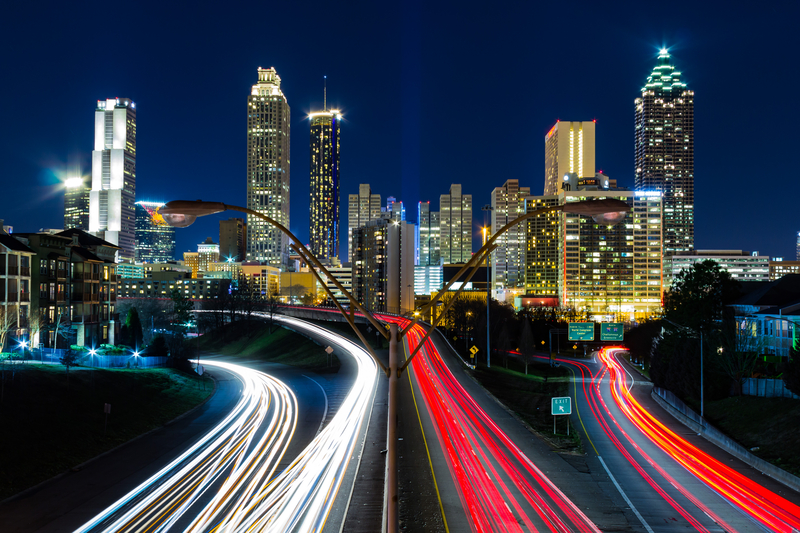
The transport industry is the fastest-growing source of global emissions. Today, it generates around 28% of total emissions with 59% coming from passenger vehicles and light trucks. While many other sectors are already reducing their emissions, transport is going the other way, threatening to undermine Paris Agreement targets. The Mobility Report 2021 by Kapsch TrafficCom illustrates the current transport challenges and shows innovative solutions for dealing with them.
Although vehicle miles travelled (VMT) dramatically declined during the early days of the Covid-19 pandemic, traffic has by now rebounded to pre-pandemic levels. In addition, many people are less willing to use public transport than previously due to the infection risk, putting even greater demand on road networks and increasing VMT. As dependence on private vehicles continues to grow worldwide, no city or highways authority can be complacent about the growing emissions challenge. The average internal combustion engine-powered car emits 8887g of CO2 per gallon of fuel and a total of 4.6 metric tons of CO2 every year. In addition to releasing greenhouse gases, excessive traffic is also negatively impacting air quality: up to 91% of the population is now living in cities where air quality is below World Health Organisation (WHO)-defined safe levels, with an estimated 4.2 million air-pollution-related deaths each year. With 37%, road traffic is one of the main sources of the bad air quality.
Short-term mobility solutions urgently needed
To reduce the negative environmental and public health impacts of polluting vehicles, authorities are innovating their transport strategies. In particular, green forms of transport have become a major focus for investment, from e-mobility schemes in city centres to allocation of space on the road network for bus lanes, bike lanes, tram infrastructure, and many more. But while green transport options are ultimately key to making transport truly sustainable in the long term, short-term solutions are urgently needed to curb emissions from the millions of vehicles on the world’s road networks.

“Urban traffic and congestion management provide an immediate impact helping to reduce CO2 emissions,” says Alfredo Escribá, CTO of Kapsch TrafficCom.
“Reducing stop-and-go-traffic by communicating traffic signal information to drivers alone has been shown to reduce fuel consumption and therefore emissions, according to a recent study from Canada. More advanced methods, involving vehicle connectivity and AI-based data processing, can further reduce emissions caused by congestion and inefficient traffic.”
Limited impact of traditional traffic management
For decades, authorities in many countries have been implementing intelligent transport systems to reduce congestion and improve air quality – from signalling solutions to congestion charging schemes. However, legacy approaches tend to focus on standalone and siloed solutions that use only a small subset of the traffic data that is available nowadays. Traditional approaches therefore only can provide limited emissions and air quality benefits that are not sufficient to adequately respond to the growing challenges of increasing traffic and emissions.
Kapsch TrafficCom proposes an innovative way to reduce traffic demand and curb emissions based on joined-up traffic management – which is where the sustainable mobility journey begins. As well as reducing congestion and improving traffic flow on busy networks, this approach can influence drivers to moderate and modify their road-usage behaviour, freeing space on road networks for greener transport alternatives.
Joined-up traffic management is about connecting partners, systems, data and capabilities to increase supply of road capacity and, most importantly, to reduce demand. It works by deploying and connecting to an umbrella system that pulls in data from a wide range of sources, analyses it in real-time, and triggers actions and responses to keep traffic flowing.
Using mobile apps and connected vehicle data, real-time traffic information can be communicated to road users, and authorities can suggest alternative, greener forms of transport that may be faster or more cost effective. This can help authorities to encourage a shift in motorists’ road-usage behaviour, thereby smoothing out the demand curve or even reducing overall traffic volumes over time.
What are the benefits of joined-up traffic management?
Compared to standalone solutions, joined-up traffic management has four key advantages:
First, joined-up traffic management can lead to a reduction of congestion and emissions. It makes it possible to detect and react to changing traffic conditions in real time. This enables authorities to adjust traffic light timings, change signage and implement access and congestion charging parameters to keep traffic flowing as quickly as possible, thereby reducing emissions.

Second, joined-up traffic management can set incentives for the use of greener transport options, making it more attractive for drivers to leave their cars at home. This can be achieved, for example, by allowing electric or non-polluting vehicles to use the road network free of charge, or by drastically increasing the cost of driving highly-polluting vehicles.
Third, joined-up traffic management can help to improve air quality. It allows authorities to integrate environmental data from sensor stations and models into the traffic management strategy and predict how air quality will evolve in the coming 30 minutes. Combining traffic and climate data also makes it possible to understand how long air quality issues are likely to persist. Based on this information, access controls or congestion charges can be adjusted to smooth out demand and to ensure that air quality remains above defined limits.
And last but not least, joined-up traffic management can lead to an increased road capacity that can be used for green transport options. With measures such as dynamic charging, joined-up traffic management can flatten the traffic demand curve throughout the day. This frees up space for bus lanes, bike lanes, and other options that reduce dependence on private vehicles and support emission-reduction targets. Also, parking restrictions can be implemented at peak times to reduce traffic demand in city centres and other traditionally congested areas.
Kapsch TrafficCom offers a joined-up, end-to-end sustainable mobility portfolio
With the help of Kapsch TrafficCom’s portfolio of joined-up traffic management solutions, authorities can advance their sustainable mobility agenda. These solutions integrate multiple stakeholders and datasets. They incorporate tools, technologies, and specialised professional services that support authorities’ chosen emissions-reduction policies based on effective supply and demand management across the road network. This gives authorities a single point of contact and responsibility for projects of all types and sizes, helping to streamline project delivery and reducing deployment time and cost risks.
Fighting emissions in Madrid
The city of Madrid, Spain, wanted to decrease demand across its heavily congested road network to reduce climate damage, improve the air quality, and enhance road user experiences by speeding up journey times. As a quick win, the city needed to fight congestion during peak times, and increase the use of public transport. To achieve these goals, Madrid implemented an innovative Integrated Mobility Management (IMM) solution from Kapsch TrafficCom. One of the solution’s elements is the real-time adaptive signal control, which allows traffic light timing to be adjusted based on current traffic flows and queues. This has helped Madrid to reduce delays and stops, reduce journey times and lower emissions. The solution has therefore contributed to a significant improvement of local citizens’ quality of life, both in terms of reduced congestion and pollution, as well as reduced risks of accidents.
New Traffic Management in Buenos Aires

In 2017, the city of Buenos Aires, Argentina, developed a strategic plan, shifting from reactive to proactive-collaborative traffic management. The new Integrated Mobility Management System (SGIM Sistema de Gestión Integral de la Movilidad) allows the city to manage data from multiple sources to generate and spread high-quality information. The SGIM software that was deployed in the city’s centre with Kapsch’s EcoTrafiX platform works as an umbrella platform that can interface and sit on top of the current structure in order to provide a more unified platform – including information from Google Maps and Waze, tolling operators, and other third party systems. Today, Buenos Aires operates with a global supervision of city mobility: monitoring events and incidents and allowing people to use a multi-modal transport system with efficient congestion management that is orchestrated by a state-of-the-art integrated control centre.
Vehicle emissions are making a major contribution to climate change and poor air quality in cities around the world. Tackling this major challenge will require broad-based policy changes, investments in greener transport modes and a change in road-user behaviour, which will take some time and can only be realised in the long term. But with the right, joined-up traffic management solutions, traffic and vehicle emissions can be significantly reduced in the short term. To find out more about the sustainable mobility solutions of Kapsch TrafficCom, you can download the brochure “Delivering the vision of sustainable mobility” here.
To learn more about joined-up traffic management and how Kapsch TrafficCom can support your goals, please contact us at ktc.experts@kapsch.net
Content produced in association with Kapsch TrafficCom












